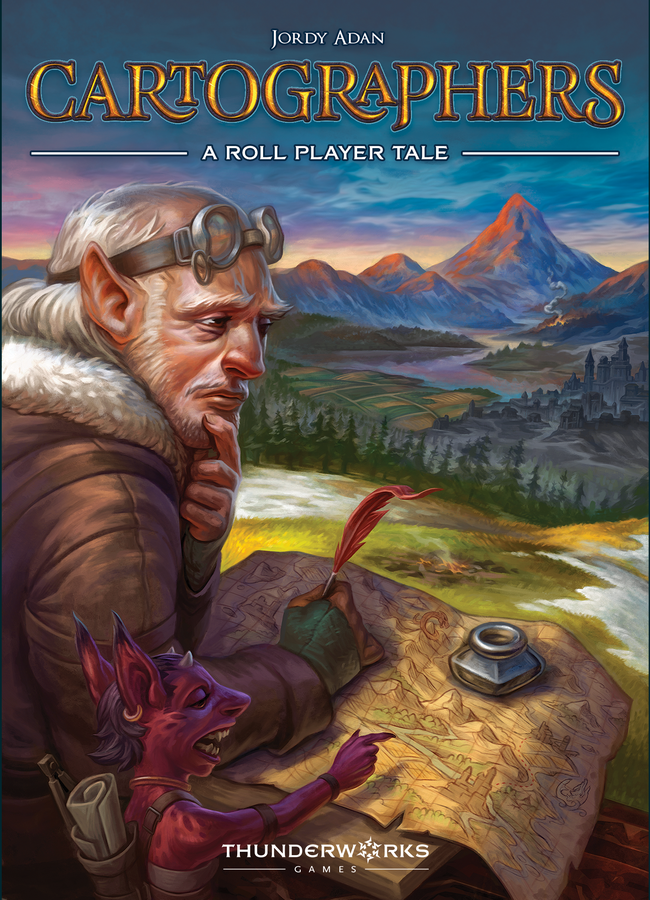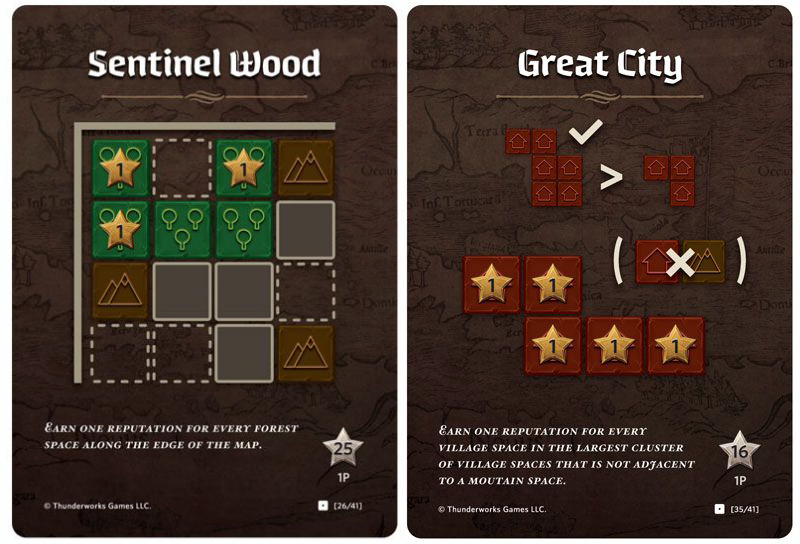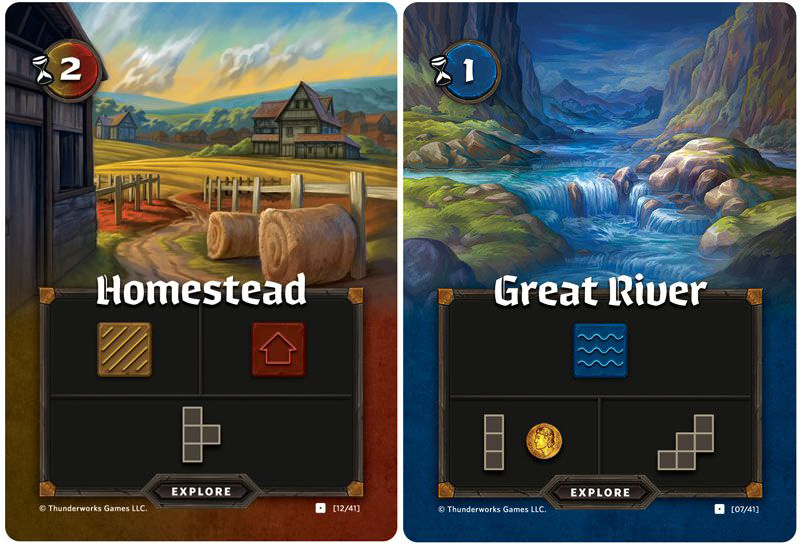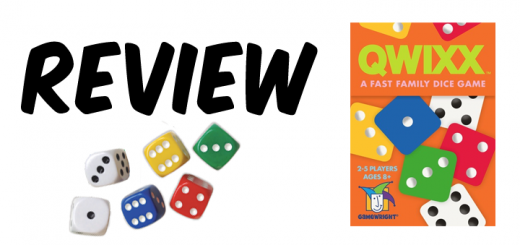In 51 Words, Click Link – A Review of Cartographers
I’m a big fan of roll and write games. They’re light, quick, and offer a lot of options to players. Flip and draw games are similar, using cards instead of dice. Does Cartographers stand out on the sprawling field of games, or does it simply blend into a fold and disappear?

Cartographers is the next release in the Roll Player universe. I’m a big fan of the dice-drafting, character-building game, so when I heard that they were coming out with a roll-and-write style game, I was excited.
The description of the game from the publisher:
Queen Gimnax has ordered the reclamation of the northern lands. As a cartographer in her service, you are sent to map this territory, claiming it for the Kingdom of Nalos. Through official edicts, the queen announces which lands she prizes most, and you will increase your reputation by meeting her demands. But you are not alone in this wilderness. The Dragul contest your claims with their outposts, so you must draw your lines carefully to reduce their influence. Reclaim the greatest share of the queen’s desired lands and you will be declared the greatest cartographer in the kingdom.
In Cartographers, players compete to earn the most reputation stars by the time four seasons have passed. Each season, players draw on their map sheets and earn reputation by carrying out the queen’s edicts before the season is over. The player with the most reputation stars at the end of winter wins!
While the story is fun, it’s not necessary to have played any other Roll Player game before. The game play is simple – each player will play across four seasons trying to out-perform their opponents.
When setting up the game, there are four edict cards drawn, one for each type of scoring. First is how Forest spaces will score, then Villages, then Farms and Rivers, and finally some special scoring rule that isn’t dependent upon a particular terrain type. Some examples of edict cards are:

Sentinel Wood gives a player one point for each Forest that is adjacent to the edge of the map. Great City gives the player a point for each Village space in the largest Village cluster that isn’t adjacent to a mountain. For each type of card, there are four cards, resulting in 256 different scoring combinations. One of the clever things about this game is that in each season, you only score two of the edict cards.
When you add to your map, you’ll do so according to the Explore card. These cards will usually display either two types of terrain and one shape or one type of terrain and two shapes. For example:

When the Homestead card is revealed, each player will make a T shape of either Farms or Villages somewhere on their sheet. This can be flipped or rotated however the player sees fit. For the Great River card, each player will add a water shape to their map. If they choose the left shape, they’ll cover two fewer spaces, but gain a coin, which is worth points at the end of each season. If taken in Spring, the coin will be end up being worth four points, which may be more than the two filled spaces would have earned otherwise. Each card also takes up time, which is in the top left corner. A season will end when enough time has passed, as indicated on the season cards.
There are also a few Explore cards that don’t follow the above designs. There’s a single wild space which doesn’t cost any time. This is great to fill in those spaces that don’t seem to get covered otherwise. There are also Ruin cards, which force the next Explore card to be placed on one of six particular spots on the map. This restriction can sometimes be fine, but other times can be very problematic. At the start of each season, an Ambush card is added to the deck. When these are revealed, players will pass their maps in the direction indicated and will add monsters to their opponent’s boards. These monsters cost points at the end of each season. If an Ambush card isn’t revealed, it stays in the deck, to potentially cause problems later.
The solo game is very similar, where the player is simply trying to out-perform the score set up by the Edict cards. This flexible score comparison works well and keeps the game fresh for solo players. The Ambush cards are pre-programmed and have special rules for how they get added to the board.
The two different maps help the game also feel fresh. There are a lot of variables in the game, but once you get the rules, the gameplay flows very smoothly. I enjoy the game, though I wonder how well the game will work with a smaller map. The preview files I printed out made the map a full page size, which is great for dry erase markers. I personally prefer to laminate roll and writes, but the 5 x 7 maps will require some very fine dry erase markers.
I wish the game had a cheat card or something on the sheet to show what shapes are in the game. This would be helpful to new players for what to expect as well as veterans to help them not mix up shapes. Also, while the visual examples on each of the Edict scoring cards work well, the text at the bottom can be a little difficult to read. This will likely end up being clearer in the final production version though. I’m also not a huge fan of the “pass and attack” design in some games, but it works fine in this game. I may try the solo rules for the Ambush cards for multiplayer at some point.
The overall feeling of the game is really solid. I think Keith at Thunderworks Games puts a lot of effort into making the games they publish work for multiple players and solo, and it really shows. I am happy to sit down and play this on my own as much as I am happy to play with others. The player count is very flexible and doesn’t have much impact on the play time at all.
Interested in preordering Cartographers? You can do so here!






1 Response
[…] Cartographers is one of the most thematic flip and draw style games I’ve ever played. It’s also really easy to teach, quick to play, and works solo and multiplayer. If you want a full overview of the original game, please check out my full review here. […]